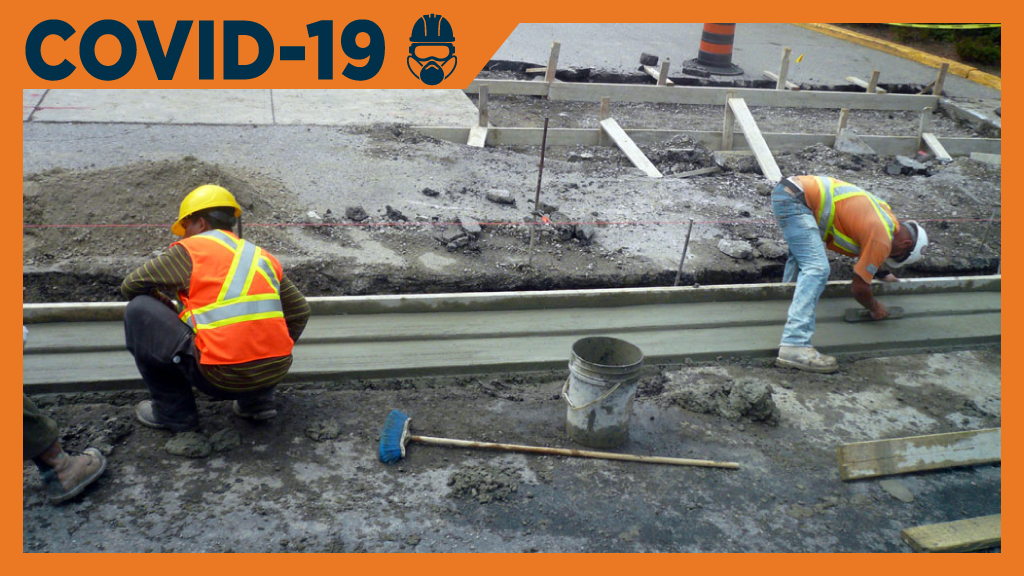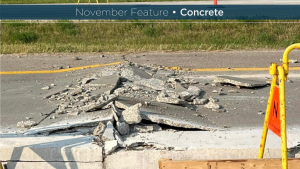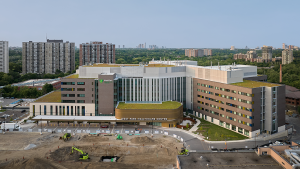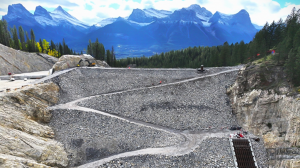Canada’s cement and concrete industries are calling on the federal government to prioritize construction and strategic infrastructure spending to help Canada recover from the impact of COVID-19.
Specifically, they want the government to accelerate the transfer of funds under the $182-billion Investing in Canada Infrastructure Plan, prioritize large-scale infrastructure projects and boost investment in municipal state-of-good-repair (SOGR) projects to get the industry back on track and hiring workers.
“We have sand pits and gravel quarries across this province and there’s at least one concrete facility in any town larger than 5,000 people,” says Michael McSweeney, president and CEO of the Cement Association of Canada.
“If all those people are fully employed, they’re getting their haircuts, their wives are going to the salon, they’re getting takeouts, they’re going to a movie and they’re buying gas and groceries.
The association, which represents major players in Canada’s cement industry who operate manufacturing, grinding and distribution facilities, has teamed up with the concrete industry to release a joint seven-point declaration entitled Building a Successful Economic Recovery in Canada.
The coalition also sent a letter to Prime Minister Justin Trudeau and senior cabinet ministers.
The declaration was developed to help shape the federal government’s COVID-19 recovery plan. It highlights the weakened financial state of Canada’s municipalities and the need for the federal government to absorb a greater share of the cost of infrastructure projects in communities across Canada.
If we could advance some of these projects over a five-year period rather than a 10-year period we can get the economy growing
Michael McSweeney
Cement Association of Canada
The declaration is signed by companies like St. Mary’s Cement, LaFarge Canada Inc., Lehigh Hanson Materials Canada, CRH Canada Group and McInnis Cement. It calls on the government to put the construction sector at the core of the COVID-19 economic recovery plan and boost investment in municipal SOGR projects because community assets such as roads and bridges can be started quickly since they do not require the lengthy planning and approval processes that come with new capital projects.
McSweeney says municipalities are facing constraints and many are running deficits as a result of spending to cope with the pandemic so they won’t have the funds for much-needed infrastructure projects. The federal government must step in to quickly approve more spending.
“If we could advance some of these projects over a five-year period rather than a 10-year period we can get the economy growing again.”
McSweeney noted much of the construction work on infrastructure takes place at the municipal level, so the industry maintains that directing dollars to municipal governments and their infrastructure activities will spur the economy to a much quicker recovery.
“One of the first indicators of a growing economy are that the foundations are being poured and construction jobs are being undertaken. They are the first line of people that you can call back to work. The more shovels put in the ground for infrastructure projects the more jobs are created for people in small towns,” he says.
“The more concrete we pour, the more aggregates we use. Along the whole supply chain, you’ve got aggregate, you’ve got sand, those are generally done in smaller communities and rural municipalities. That gets brought to larger municipalities and big cities. So, through the construction supply chain you’re creating a lot of jobs and you’re putting more people to work.”
Before COVID struck, the cement and concrete industry employed more than 158,000 Canadians and had annual economic activity in excess of $76 billion. In 2019, the building materials and construction industries contributed $157 billion in economic activity, representing 7.9 per cent of Canada’s overall GDP
“If we can get people back to work in the construction industry, and in the aggregate pits and sand pits, that gets people off of government assistance and gets them to a job that pays,” says McSweeney.
To kick-start the process, the industry is urging the federal government to bend the rules a bit and get projects going by dealing directly with municipalities instead of negotiating endlessly with the provinces.
Municipal governments are the closest to the communities and the mayors and Federation of Canadian Municipalities know what projects need to be done, McSweeney states.
“Don’t spend all your time negotiating with the provinces, deal with the mayors and get the money out the door.”
The industry wants Ottawa to make an immediate investment through the existing Gas Tax Fund so that municipal projects will have shovels in the ground this construction season. Also, the industry wants the federal government to cover 100 per cent of the municipal share of all approved projects that can be started this construction season and completed by the end of the 2022 construction season.
“Don’t do it spuriously or without due diligence, but get it out the door. Let’s not have bureaucracy and negotiate for four or five months,” says McSweeney.











Recent Comments
comments for this post are closed